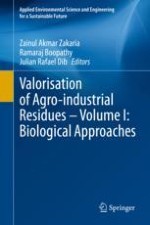2020 | OriginalPaper | Buchkapitel
6. Utilization of Agro-Waste as Carbon Source for Biohydrogen Production: Prospect and Challenges in Malaysia
verfasst von : Muhd Nazrul Hisham Zainal Alam, Nadia Adrus, Mohd Firdaus Abdul Wahab, Mohd Johari Kamaruddin, Mohd Helmi Sani
Erschienen in: Valorisation of Agro-industrial Residues – Volume I: Biological Approaches
Aktivieren Sie unsere intelligente Suche, um passende Fachinhalte oder Patente zu finden.
Wählen Sie Textabschnitte aus um mit Künstlicher Intelligenz passenden Patente zu finden. powered by
Markieren Sie Textabschnitte, um KI-gestützt weitere passende Inhalte zu finden. powered by
